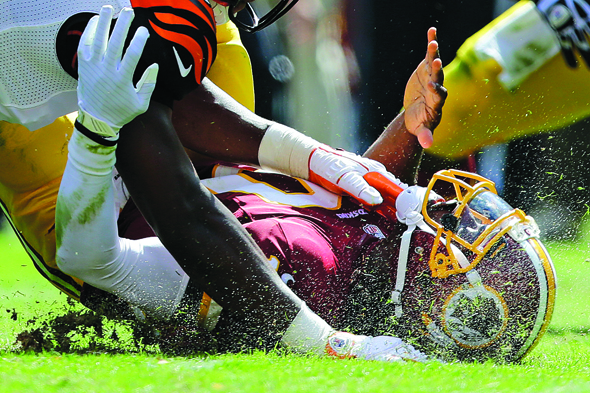
Down and out? Washington Redskins quarterback Robert Griffin III is slammed to the turf during a game against the Cincinnati Bengals on September 23, 2012. Alex Brandon via AP Images
Last month’s Frontline documentary, League of Denial, was the emotional coda to the first phase of one of the most important stories in American sports: the long-term effects of repeated collisions on football players’ brains. Whatever questions remain–is the game’s routine head-knocking a problem, for instance, or just the vicious hits that turn up on SportsCenter?–there is little doubt that change is coming. The National Football League, after doing everything it could to make the story go away, in August agreed to pay more than $765 million to settle a lawsuit by former players. But the underlying reality–that the violence is part of what makes football America’s favorite sport (and a hugely profitable business)–remains. Can the rules be changed in ways that protect players without turning off fans? And what will the next generation of fans demand from football, anyway? From the groundbreaking work by Alan Schwarz in The New York Times to the publication this fall of League of Denial (on which the Frontline documentary is based) by Mark Fainaru-Wada and Steve Fainaru, journalists have forced the league, and American society, to pay attention. But in many ways the most difficult part of this story starts now.
The Editors are the staffers of the Columbia Journalism Review.
